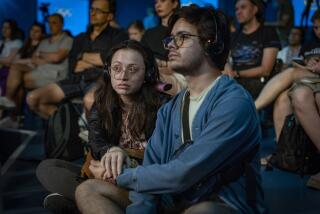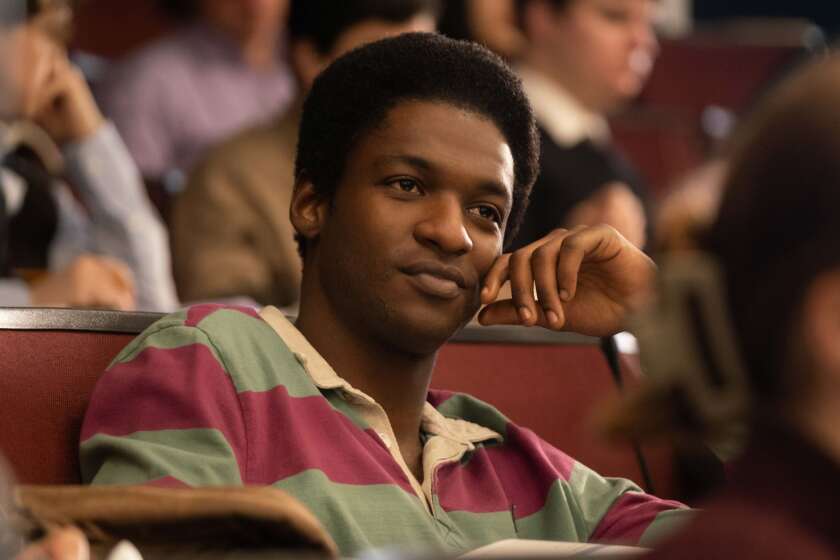‘Warsaw Uprising’ commemorates ill-fated 1944 rebellion against Nazis
Filmmaker Jan Komasa described the Warsaw Uprising — the ill-fated 63-day struggle led by the Polish resistance Home Army to liberate the city from Nazi occupation — as “a massacre.”
“Everybody thought it would only take three days to beat the Germans,” said Komasa, director of the Polish film “Warsaw Uprising,” which opens Friday. “Everyone expected the Western countries and the Russians to help. Hitler apparently wanted to destroy Warsaw and kill everybody.”
Komasa’s film, which coincides with the 70th anniversary of the surrender of the Home Army, was culled from six hours of original silent newsreel footage shot by teams from the Home Army’s Bureau of Information and Propaganda. Komasa and his team edited down the footage to 87 minutes, all restored, colorized and augmented with new sound effects and dialogue.
The process was laborious. Military, clothing and architecture consultants, Warsaw experts and historians were consulted to make the colorization authentic. Because so much of the silent footage features people talking, the filmmakers hired a deaf lip-reader to translate what the people on screen were saying, as well as voice actors to dub in dialogue.
As if that weren’t novel enough, Komasa took this real footage and blended it with a fictional story about two young brothers from the propaganda bureau and a U.S. airman recently escaped from a German POW camp who are filming the conflict. Though they are never seen on camera, they provide the voice-over commentary on the uprising, as well as their own lives. The result is a hybrid documentary-narrative feature.
Jan Oldakowski, director of the Warsaw Uprising Museum in Poland, and Piotr C. Sliwowski, head of the history department at the museum, first approached Komasa about doing the film. The director had become friendly with the two while researching a narrative feature he was writing, “City 44,” which opened last month in Poland.
“They showed me a sample in color,” Komasa said of the newsreel material. “They said, ‘We have more of it. We have six hours of footage.’ It was amazing footage. It was jaw-dropping.”
Though purists may take umbrage with the vintage black-and-white being colorized, Komasa said the addition of color was meant to make the film more appealing to contemporary audiences — “to break the barrier between us and 70 years ago.”
Komasa and his editor spent a year watching the six hours of footage and selecting shots to create a movie with a cohesive storyline.
“I wanted to make the structure where at the beginning of the uprising we can find high expectations,” Komasa said. “Then step by step, you see the city being destroyed, people are losing their smiles and then the city we had was kind of erased.”
Los Angeles is home to several Warsaw natives who participated in the uprising, including Zbigniew Petryka, 84, and Andrzej Stefanski, 89. Both have seen “Warsaw Uprising” and have vivid memories of the conflict to compare against the film.
“I think the director wanted to show how it really was,” said Petryka, who was too young to fight with the army in 1944.
“But let’s put it this way, I participated,” he said by phone from his home. “I was the one running the messages from one unit to another. One of the highlights was when they put me on guard duty and they gave me the rifle to stand with it. I was not skilled with the rifle, but I was so proud that I had a rifle. I could stand and guard. The rifle was as tall as I was!”
But the uprising certainly wasn’t a game, said Petryka, a former chemist who came to the U.S. in 1964.
“People were dying all over the place,” he said. “Death was there all the time.”
Stefanski was 18 when he fought in the uprising.
“I was part of the Home Army since 1942,” he said by phone. “We were having training in small groups. If the whole group gathered, Germans would know it. Many people were arrested and killed or put in concentration camps and exterminated.”
Food was scarce during the conflict. And on one occasion, Stefanski and a fellow soldier risked their lives one night to dig up vegetables that were planted in front of a German fortification.
“One of the people says in the movie, ‘The soldiers can fight without arms, but they can’t fight without food,’” said Stefanski, a retired engineer who came to the U.S. in 1958. “We had to crawl and dig with our bare hands. We came back alive from this excursion, but two days later, my partner was going on another excursion, was injured and died the next day. Several people were killed. I was very fortunate.”
More to Read
Only good movies
Get the Indie Focus newsletter, Mark Olsen's weekly guide to the world of cinema.
You may occasionally receive promotional content from the Los Angeles Times.











